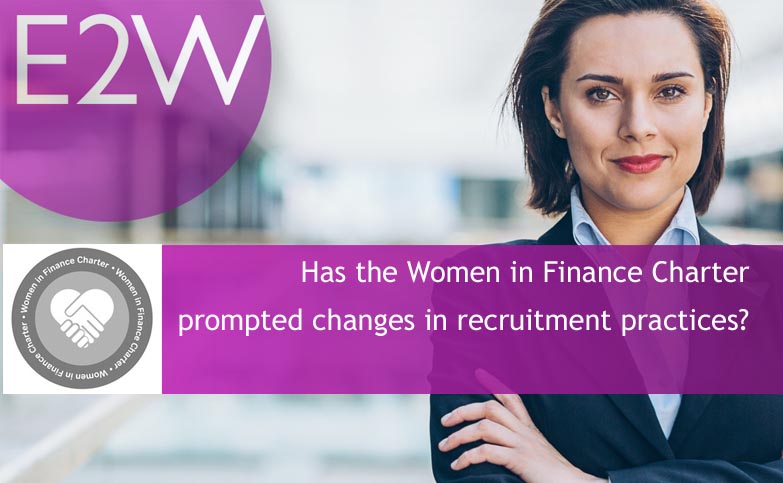
Want to drive permanent change? Rethink recruitment
Mark.Freed / 12 Jul 2017
This week, a new batch of signatories was announced to the Women in Finance Charter – a great sign of the sector’s growing realisation of the need for gender balance. Additionally, the results of a survey of existing signatories have been published. Download a copy here.
One of the highlights of the report described the impact of the Charter: “Two thirds of the signatories surveyed believe signing the Charter will drive permanent sustainable change in their company and across the financial services industry.”
Great news! This is exactly what the Charter was designed to do, and it’s uplifting to see that firms agree.
So, what action has been promoted? When asked what specific action signatories had taken, the top reply was examining hiring practices (56%) followed by implementing unconscious bias training (37%), and requiring improved gender diversity from search firms’ shortlists (31%).
All are excellent steps – ensuring women are considered for positions, and being able to hire and retain top talent is crucial for any firm wishing to fulfil commitments made via the Charter. It’s heartening to see firms taking such action – we’ve discussed before how rethinking recruitment practices is key to moving the needle. But we’re still worried.
We’ve seen and heard evidence of reluctance in the sector to take a proper look at their hiring practices, or implement true change. Candidates are all too often met by all-male hiring panels and women still face inappropriate questions at interviews - being asked about childcare logistics and how they manage. Over 80% of the hiring managers we interact with are men! Recruiters still struggle with women returners and can ignore those who have taken time out of work, as their CV may not match a job description perfectly. Instead, focus needs to be on transferable skills, rather than matching a rigid skill set to the job.
Such stories demonstrate the need to evaluate hiring practices. We can make all the noise in the world about gender equality, but without practical change women will continue to be underrepresented.
So, what’s holding recruiters back from making real change? Surely all those highly publicised internal gender targets set by firms are incentive enough? Often, they are not.
A recruiter’s main objectives and targets when filling a position are time to hire and cost of hire. Recruiters are focused on filling a position quickly and cheaply - any other target takes a backseat to these two. If firms are serious about their commitment to the Charter and moving towards gender-balanced workforces, then these priorities need to be re-evaluated. If they are going to meet their gender targets firms need to hire proportionately more women at all level – that is obvious.
We’ve said it before and we’ll say it again: do things in the same old way and you get the same old results.
When asked what the main challenges were in meeting their Charter commitments, three of the most popular responses were: 1. Shortage of female talent 2. Attracting talent to the sector 3. Hiring talent externally and concerns about pushing recruiters for more gender-balanced shortlists.
The shortage of female talent is a myth. Most of our clients release roles to us when they have exhausted internal searches, their own in-house teams have given up trying to find external candidates and the role is released to outside agencies – in other words everyone has given up finding candidates of either gender. Yet our record shows that for over half of these roles we can find at least 3 high quality female candidates. Many get recruited.
Rethinking recruitment practices would make serious headway in solving these ‘challenges’. Finding and hiring talented women is not hard. Firms need to be part of driving change within the sector, otherwise risk losing out on female talent and women remaining underrepresented.
As Jayne-Anne Gadhia said, “Embracing diversity not only improves productivity and business performance, it is quite simply the right thing to do.”
Back to blog





 Women in Financial Services
Women in Financial Services